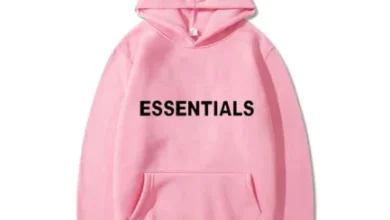
The plus-size fashion industry has undergone significant transformation in recent years, yet barriers persist that hinder its full potential. As consumer demand grows for more inclusive sizing and diverse representation in fashion, brands face challenges in meeting these expectations. This article explores the historical, societal, and industry-specific barriers to plus-size fashion, along with the evolving opportunities for brands to better serve plus-size consumers. https://barriersclothing.site/
Table of Contents
ToggleA Brief History of Plus-Size Fashion
Fashion, traditionally, has catered to a narrow vision of beauty. For decades, plus-size individuals were marginalized in fashion, with few options beyond ill-fitting, matronly clothing. It wasn’t until the 20th century, particularly in the 1990s and early 2000s, that the term “plus-size” entered mainstream dialogue, and designers began to recognize the market’s potential.
However, the early forays into plus-size fashion were often half-hearted. Brands would offer limited styles, poorly designed garments, or simply extend straight-size designs to larger sizes without considering the distinct body types of plus-size consumers. These efforts often felt like afterthoughts rather than genuine attempts to cater to the needs of this demographic.
Despite the growth of the plus-size market, many of these historical barriers remain deeply rooted, creating challenges that both consumers and brands must navigate.
Societal Barriers and Body Image
One of the most significant barriers to the growth of plus-size fashion is societal perception. Western culture, particularly in the United States, has long idealized thinness as the standard of beauty. This pervasive ideal is often reinforced by media, advertising, and even fashion itself. Plus-size individuals have historically been stigmatized, leading to issues of self-esteem, body image, and exclusion from the fashion industry.
The “thin ideal” has been so deeply ingrained in American society that many plus-size consumers internalize feelings of inadequacy, making it difficult to confidently engage with fashion. This, in turn, has created a cycle where plus-size individuals have been less visible in mainstream fashion marketing, contributing to the perception that fashion is only for those who fit into a narrow size range.
While body positivity movements and initiatives like #EffYourBeautyStandards have gained traction in recent years, the fashion industry still struggles to represent a true diversity of body sizes and shapes. Brands often rely on tokenism, featuring one or two plus-size models in campaigns while continuing to primarily showcase thin bodies. This disparity sends a message that plus-size consumers are not truly valued by the industry.
The Sizing Dilemma: A Standard That’s Anything But
Sizing is one of the most significant barriers in plus-size fashion. Unlike straight-size fashion, which generally adheres to a consistent sizing standard, plus-size fashion often lacks uniformity. A size 16 in one brand may differ drastically from a size 16 in another, causing confusion and frustration for consumers.
The lack of standardized sizing is exacerbated by the fact that many brands, particularly those that primarily cater to straight-size consumers, do not invest in creating clothing patterns specific to plus-size bodies. Instead, they often scale up patterns designed for smaller frames, resulting in garments that do not fit properly. This leads to issues like improper proportions, uncomfortable cuts, and a lack of attention to the way different fabrics interact with plus-size bodies. https://billionairestudiosclothing.us/
Plus-size consumers frequently face difficulty finding clothes that not only fit but also complement their body shapes. The lack of consistency in sizing across brands and even within individual lines makes online shopping—a major source of fashion retail—particularly challenging.
Lack of Variety and Style Options
Historically, plus-size fashion was limited to dull, shapeless designs that prioritized comfort over style. Even today, while there has been progress, many brands still focus on loose, conservative clothing styles for plus-size individuals, reinforcing the outdated stereotype that larger bodies should be hidden.
The reluctance to embrace bold, trendy, or form-fitting clothing in plus-size fashion stems from a combination of factors. Some designers, due to a lack of familiarity or experience, may shy away from creating more daring styles for fear of poor fit or backlash. Others may still subscribe to outdated notions about what plus-size consumers “should” wear.
As a result, plus-size individuals often have fewer choices when it comes to fashionable, on-trend clothing. This lack of variety and stylish options can make fashion feel inaccessible and uninviting for plus-size consumers, further reinforcing societal stereotypes and excluding them from full participation in fashion culture.
High Costs and Limited Availability
Another barrier that disproportionately affects plus-size consumers is the high cost and limited availability of plus-size clothing. Many major retailers still fail to offer an inclusive size range, often only extending up to a size 12 or 14. Those that do offer plus sizes frequently charge a “fat tax,” where plus-size items are priced higher than their straight-size counterparts.
The rationale for this pricing disparity often centers on the increased material costs associated with producing larger garments. However, this argument is often criticized as a thinly veiled excuse to charge more for the same item of clothing, despite the fact that many straight-size garments use varying amounts of fabric without resulting in a price difference.
In addition, brick-and-mortar stores frequently neglect to stock plus-size clothing, relegating these options to online-only platforms. This can be particularly challenging for plus-size consumers who prefer to try on clothes before purchasing or who may have difficulty navigating the inconsistent sizing standards prevalent in plus-size fashion.
Misrepresentation and Lack of Diverse Role Models
One of the most critical barriers to the growth of plus-size fashion is the lack of proper representation. While the fashion industry has made strides in featuring more diverse body types, it often still fails to represent the full spectrum of plus-size individuals.
Plus-size models who gain visibility in mainstream media often fall on the smaller end of the plus-size spectrum (sizes 12–16), which does not adequately reflect the diversity of body types that exist within the plus-size community. This lack of full representation means that many plus-size consumers, particularly those in larger sizes, feel left out of the conversation.
Moreover, the few plus-size influencers and celebrities who do gain prominence in the fashion world are often hyper-stylized, with professional hair and makeup teams and access to custom-made clothing. While these figures help promote body diversity, they can also create unrealistic standards of beauty that are just as unattainable as those imposed on straight-size individuals.
Changing the Narrative: Opportunities for Growth
While the barriers to plus-size fashion are significant, there is also immense opportunity for change. The demand for inclusive fashion is growing, and consumers are increasingly vocal about their expectations for representation, quality, and variety. Brands that fail to meet these demands risk alienating a large—and lucrative—segment of the market.
Embracing True Body Diversity
To truly break down the barriers in plus-size fashion, brands must go beyond tokenism and embrace genuine diversity in their marketing campaigns, fashion shows, and product lines. This means featuring models and influencers who represent a broad range of body types, shapes, and sizes—not just those on the smaller end of the plus-size spectrum.
Representation matters. When plus-size consumers see bodies like theirs celebrated in fashion, they are more likely to feel included and confident in expressing their personal style.
Investing in Proper Fit and Design
One of the most critical steps fashion brands can take is to invest in designing clothing specifically for plus-size bodies. Rather than simply scaling up straight-size patterns, brands should create separate designs that account for the unique proportions, curves, and needs of plus-size consumers.
Brands should also strive for consistency in sizing, making it easier for plus-size shoppers to find clothes that fit without the frustration of constantly navigating inconsistent measurements.
Offering Variety and Style
Plus-size consumers, like all consumers, deserve access to a wide variety of styles. Brands that limit their plus-size offerings to basic, conservative clothing risk alienating consumers who want to embrace bold, trendy, or form-fitting styles. By offering a full range of options—from casual wear to formal attire, from basics to high fashion—brands can empower plus-size individuals to express themselves confidently through their clothing choices.
Normalizing Plus-Size Bodies in Fashion Media
Fashion media must also play a role in normalizing plus-size bodies. Magazines, websites, and social media platforms that focus on fashion should ensure that their content reflects the full diversity of body sizes. This includes regularly featuring plus-size models, influencers, and fashion designers, as well as publishing content that highlights the achievements and contributions of the plus-size fashion community.
Conclusion
The barriers to plus-size fashion are deeply entrenched, but they are not insurmountable. By embracing true body diversity, investing in proper fit and design, and offering a wide variety of stylish options, the fashion industry has the potential to become truly inclusive. Brands that rise to the challenge will not only meet the needs of plus-size consumers but also contribute to a more equitable and diverse fashion landscape.





